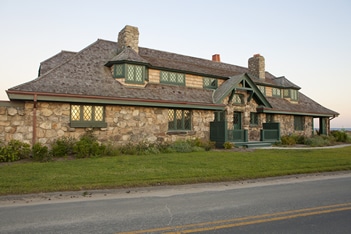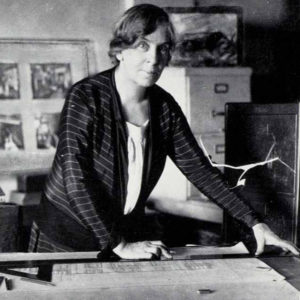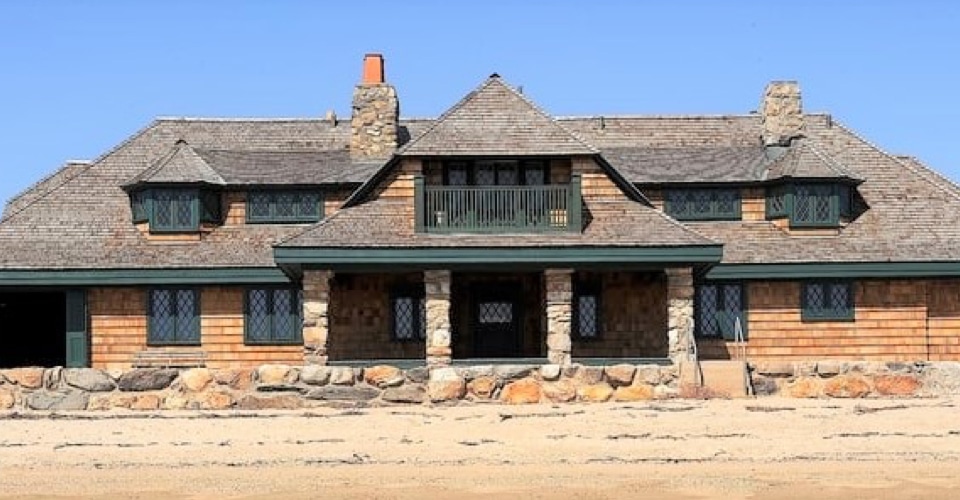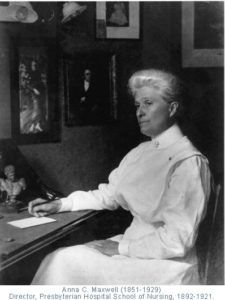In 1903, the Tods added a guest cottage just south of the access road to their property. Innis Arden Cottage was built to provide a temporary home for Maria Tod’s widowed sister-in-law, Mrs. Cranston Potter, and her three young daughters. The girls attended the all-girl school, Rosemary Hall, in Rock Ridge for a short time before the family returned to their home in the state of Washington.



The oldest daughter, Bertha Marie, married William E. Boeing, the aviation pioneer and founder of the Boeing Airplane Company. Bertha had fond memories of her time at Innis Arden and aptly applied the name to a section of the Boeing estate that is now one of the 14 designated neighborhoods in the town of Shoreline, WA, on Puget Sound.
From 1906 through 1913, the Tods made the Cottage available as a summer retreat for Anna C. Maxwell and her nursing students from the New York Presbyterian Hospital. Maxwell, often referred to as the “American Florence Nightingale,” performed pioneering work in the development of the nursing profession. The Tods’ support of the hospital, and Maxwell in particular, most probably derives from J. S. Kennedy’s tenure as president of the hospital’s board of directors. Besides donating one million dollars to establish a nursing school at the hospital (now known as the Columbia University School of Nursing), Kennedy also recommended Maxwell to be its first director.
Maxwell was one of the first women to be buried with full military honors at Arlington National Cemetery.

Katharine Cotheal Budd designed the Cottage in the Craftsman/Bungalow style that was newly popular after the turn of the 20th century. Budd was an associate of William Appleton Potter, Maria Tod’s uncle who designed the manor house at Innis Arden. She was also the first female member of the New York chapter of the American Institute of Architects. In 1917, the Young Women’s Christian Association retained Budd to design over 70 “Hostess Houses,” which were constructed to house women visiting male relatives and suitors training at nearby military facilities.

The exterior of the Cottage featues many of the defining characteristics of Craftsman/Bungalow style, namely:
- 1 or 2 stories with a low-pitched roof
- Complex and cross gabled roof lines
- Broad eaves
- Natural materials indigenous to the location
- Mixed shed, gabled, and hipped dormers
- Substantial covered porches
- Multiple windows appearing together in banks
- Casement windows
- Shingle siding
Now the “walking” portion of the tour starts in earnest.
After visiting the Cottage, return to the Old Barn. There are very few “sidewalks” on the Point, so it is expected that pedestrians will walk along the roadways where there are no parallel paths by safely navigating vehicular traffic.
Using the crosswalk between the beach and the Old Barn, cross over the outbound lane and travel through the parking lot parallel to the inbound lane. A pathway begins just past the first “curbcut” that allows cars to enter the large beach parking area.
On your right is Greenwich Cove.
On your left is a parking lot. Here Scotsman Tod fashioned a nine-hole links golf course with a playing length of 2,950 yards over 75 acres of sandy dunes and low ridges. In 1899, he formed the Innis Arden Golf Club and invited sixty friends and neighbors to join for a fee of $12.50 per month [approximately $375 per month today using the Consumer Price Index as a reference].
The collegiality was interrupted, however, in 1904 when Tod determined the group had encroached on his enjoyment of his property. The club regrouped – with Mr. Tod as a charter member – and moved farther inland to Shorelands and then again to Tomac Avenue where it stands today. Nine years after Mr. Tod’s death in 1934, Mrs. Tod permitted the club to reuse the “Innis Arden” name. The original gate to the Tod estate was installed on the first tee at the new club in 1971.
I

